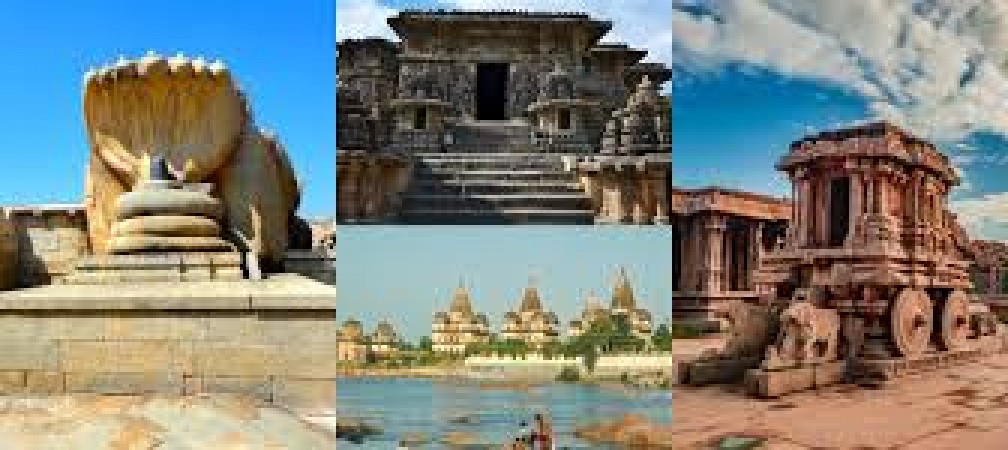
India, renowned for its rich cultural tapestry, harbors numerous treasures beyond the mainstream attractions. While iconic landmarks like the Taj Mahal and the Red Fort capture global attention, several lesser-known cultural heritages remain hidden, awaiting discovery. Delving deeper into the diverse heritage of India unveils a world of captivating narratives and lesser-explored marvels. Here are five cultural gems that often escape the spotlight:
Nestled in Karnataka's heartland, the Bidar Fort stands as a testament to the Deccan Sultanate's grandeur. Despite its historical significance, this architectural marvel remains relatively obscure. The fort's imposing walls, intricate archways, and Persian influences reflect a blend of Hindu, Persian, and Turkish architectural styles. Exploring its labyrinthine pathways and royal chambers offers a glimpse into Bidar's storied past, echoing tales of conquests and cultural synthesis.
Constructed in the 15th century, the Bidar Fort served as the capital of the Bahmani Sultanate. Its strategic location facilitated trade and cultural exchanges, fostering a vibrant milieu of art and literature. The fort's enduring legacy lies in its fusion of Indo-Islamic architecture, exemplifying the syncretic ethos of medieval India.
Tucked away in Gujarat's hinterland, the Champaner-Pavagadh Archaeological Park offers a glimpse into India's pre-Mughal history. Designated as a UNESCO World Heritage Site, this expansive complex comprises mosques, temples, forts, and tombs, spanning diverse architectural styles. Amidst its rugged terrain, ancient ruins whisper tales of dynasties long forgotten, inviting visitors on a journey through time.
Dating back to the 8th century, the park served as an important center of trade and pilgrimage. Its archaeological remnants bear witness to the rise and fall of empires, including the Chalukyas, Solankis, and Mughals. The juxtaposition of Hindu and Islamic structures reflects the region's cultural assimilation, offering a nuanced perspective on India's historical continuum.
Perched atop the rugged hills of Rajasthan, the Kumbhalgarh Fort stands as a symbol of Rajput valor and architectural ingenuity. Often overshadowed by its more famous counterparts, such as the Mehrangarh and Amber forts, Kumbhalgarh boasts the second-longest continuous wall after the Great Wall of China. Beyond its formidable defenses lie intricately carved palaces, temples, and reservoirs, mirroring a bygone era of splendor.
Commissioned by Rana Kumbha in the 15th century, the fort served as the stronghold of the Mewar kingdom. Its impregnable walls, spanning over 36 kilometers, bear testimony to the region's tumultuous history. Despite enduring several sieges, Kumbhalgarh remained unconquered for centuries, embodying the resilience of the Rajput ethos.
Floating amidst the Brahmaputra River's gentle currents, Majuli emerges as the world's largest river island, shrouded in mystique and serenity. Home to the Assamese neo-Vaishnavite monasteries, or 'satras,' Majuli exudes spiritual fervor and cultural vibrancy. Despite its ethereal charm, the island faces existential threats due to erosion and climate change, underscoring the urgency of preservation efforts.
The 'satras' of Majuli serve as repositories of Assamese art, music, and dance forms, including the iconic Sattriya dance. Founded by the 15th-century saint-scholar Srimanta Sankardeva, these monastic institutions embody the synthesis of Bhakti and indigenous traditions. Majuli's rustic landscape and idyllic ambiance offer a retreat from the hustle and bustle of modern life, beckoning travelers to immerse themselves in its timeless allure.
Unveiling the enigmatic legacy of the Indus Valley Civilization, Dholavira emerges as one of the most prominent archaeological sites in India. Located in Gujarat's Rann of Kutch, this ancient citadel bears witness to a sophisticated urban settlement dating back over 4,000 years. Its meticulously planned layout, advanced water management systems, and intricate artifacts offer insights into a bygone civilization's societal complexities.
Excavations at Dholavira have unearthed monumental structures, reservoirs, and an elaborate system of fortifications, underscoring the civilization's engineering prowess. Despite its significance, Dholavira remains relatively obscure, overshadowed by better-known sites like Mohenjo-Daro and Harappa. However, ongoing research and conservation efforts aim to shed light on this ancient metropolis, unraveling the mysteries of India's past.
As guardians of India's cultural heritage, these lesser-known marvels beckon intrepid travelers and history enthusiasts to embark on a journey of discovery. Beyond the confines of popular tourist circuits lie untold stories and hidden gems waiting to be unearthed. By embracing diversity and delving deeper into India's cultural mosaic, we enrich our understanding of humanity's shared heritage and celebrate the tapestry of civilizations that have shaped the Indian subcontinent.
Do not make the mistake of throwing away mango peels, these things can happen like this
If you want to clean your scalp naturally then make this hair scrub at home